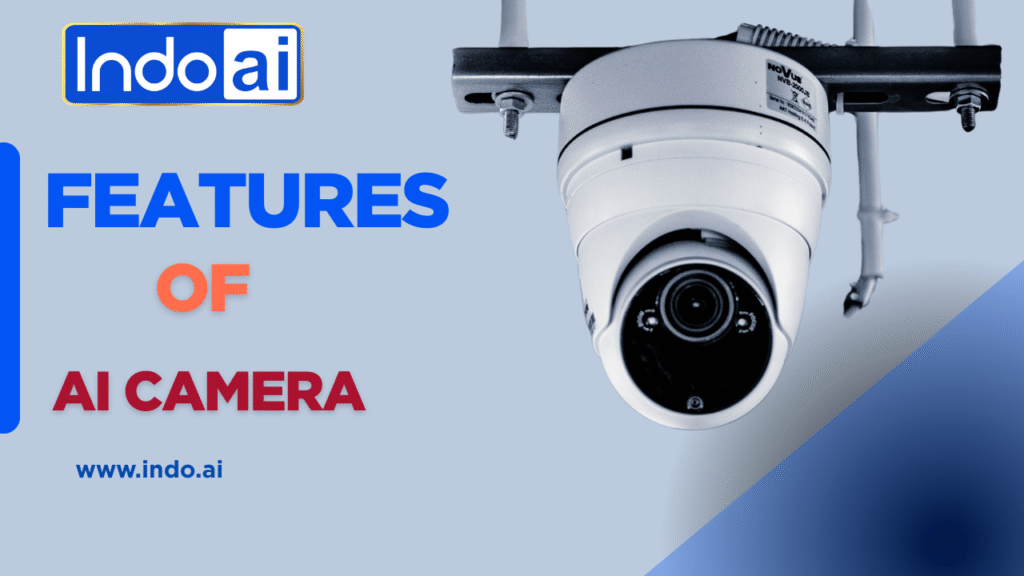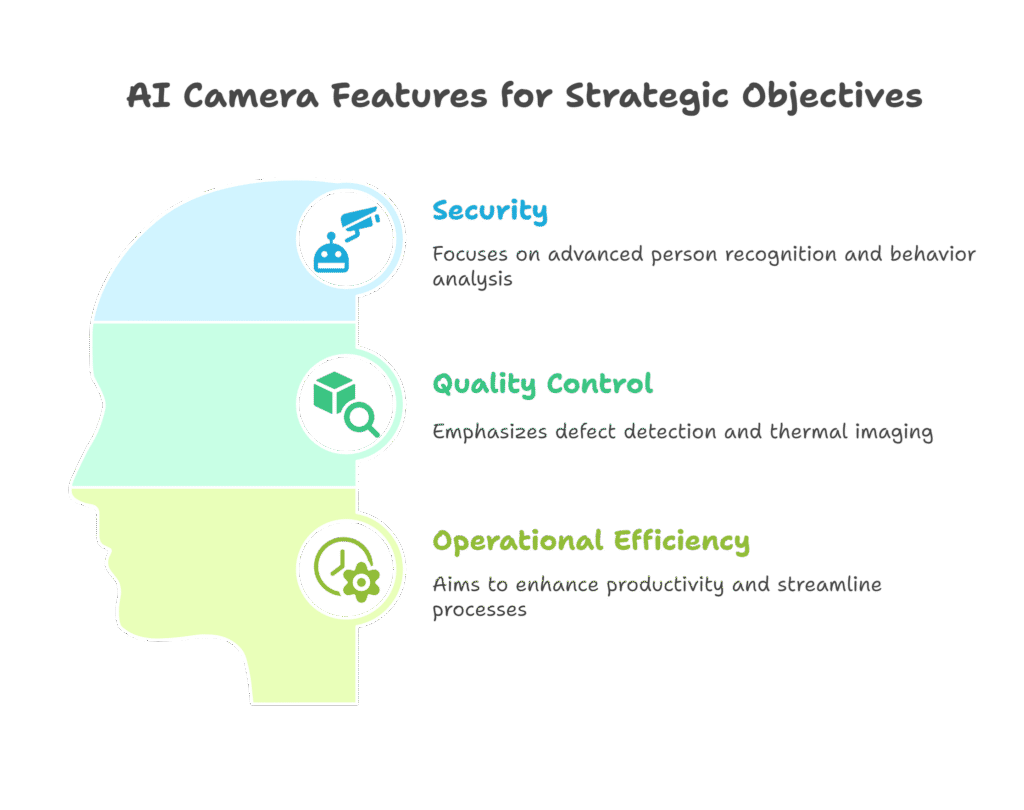
In an era of increased efficiency and safety in an automated world, AI cameras are becoming indispensable devices for businesses. There are many AI Camera Features that are unknown and going to discuss about it.
However, an AI-enabled camera alone is not enough. A camera that offers features and functionality, which is the difference between a basic video recording device, and an intelligent and proactive watcher. In this article we will share some of the most powerful AI camera features and explain how they work, what they mean for your business or home, and what to consider when selecting the optimal product.
Evolution from Traditional CCTV to AI Camera
Originally surveillance systems appeared as passive recorders that recorded the footage and demanded hours of review to find an event that occurred, a labor-intensive approach that took time and was prone to error. The use of analytics engines enhanced the ability to at least identify motion or indicated zones but still had limitations regarding accuracy and adaptability.
Modern AI cameras are implementing deep neural networks directly on the device or at the edge of the network and have learned to recognize people, objects, behaviors, and environmental changes with phenomenal accuracy. This advancement opened the door to an entirely new set of powerful AI camera features that convert pixels into intelligent actions.
1. Real‑Time Object and Person Recognition
The detection and classification of entities is the foundation of intelligent vision. The current generation of AI cameras utilize convolutional neural networks, which have been trained on large datasets, to identify humans, vehicles, animals, or any object of interest within a specific industry.
What makes these world-class systems unique is the ability to set multiple detection zones and adjust sensitivity by object type. For example, a retail store manager would want alerts for unattended packages but could ignore everyday customers in the aisles. This type of customization increases relevance and ensures security personnel are only focusing on actual incidents.
2. Facial Recognition and Access Control
Facial recognition has become one of the most talked‑about AI camera features. By mapping facial landmarks into mathematical templates, cameras can efficiently compare, confirm and identify live captures against enrolled identities. Within secure facilities(offices, data centers, laboratories), this function can provide substitute or add an additional layer for traditional keycards and would allow a contactless, easing of use solution upon receiving access approval for identified personnel.
When implemented responsibly, facial recognition enhances safety without compromising privacy. Resilient solutions encrypt biometric templates on-device and never transfer raw footage to external servers. Administrators can set up access control rules and audit logs, which also help them comply with various data-protection regulation requirements, helping meet both a security requirement and a compliance requirement.
3. Behavior Analysis and Anomaly Detection
Read About Behavior Analysis
More than just recognizing people, AI-enabled cameras can understand human behavior, detecting everything from loitering to falls to entering unauthorized areas. Advanced models analyze the motion of people for successive frames and can detect subtle deviations in behavior which provide early warning that something is about to happen.
Anomaly detection algorithms take a step further by creating a baseline of “normal” activity – the typical vehicle count in a parking lot or the average foot traffic in a lobby – then drawing attention to deviations. This is a very productive process for teams to look for issues before they are an issue, like a suspicious package left unattended or an unexpected bottleneck in a production line.
4. Low‑Light and Thermal Imaging Capabilities
Read More About: AI Enhances Face Detection in Low-Light Environments
Traditional cameras are often limited by lighting conditions: harsh direct sunlight can wash out details, while low-light environments can hide important information. AI cameras built for various lighting conditions use better sensors such as back-illuminated CMOS chips to maximize detail in low-light situations. In tandem with noise-reduction software, AI cameras can create crisp, usable footage in low-light situations or even at night.
Thermal imaging adds another dimension. By detecting heat signatures instead of visible light, thermal cameras visualize temperature differentials, proving invaluable for fire detection, energy audits, and search‑and‑rescue applications.
5. Edge Processing and Bandwidth Optimization
Read More: Why Edge AI Wins: The Next Frontier of Intelligent Computing
A defining feature of modern AI camera capabilities is on-device inference, often referred to as “edge AI.” Rather than uploading every single frame for a central server for processing, cameras run neural-network models locally. This architecture reduces latency—important when seconds make a difference—and uses less bandwidth.
Edge processing protects privacy by ensuring that sensitive video is only sent from the device with permission. Organizations pulled in stringent data sovereignty laws are able to deploy AI cameras with confidence, since all processing and storage is within the requirements of their local jurisdiction.
6. Automated Alerts
Intelligence is only valuable when it produces action. AI-enabled cameras can link into existing enterprise applications and automatically initiate alarms, notifications, or workflow events. For instance, in a logistics warehouse, if the AI camera detects the wrong cargo in the incorrect location, it will automatically generate a ticket in the facility-management software that forwards to the right team. Alternatively, if it detects a thermal anomaly, it could automatically send SMS messages to the maintenance crews and record the observation for historical record.
7. Scalability
As companies expand, so do their camera deployments. With top-end platforms, management is seamless via a cloud‑based dashboard, allowing administrators to set up, monitor, and update thousands of devices from one interface. Software updates, security patches, and model updates are done from the cloud, avoiding the need for time‑consuming site visits.
8. Privacy, Security, and Ethical Considerations
Even with advanced AI camera capabilities, strong protections must mitigate risk. End‑to‑end encryption, at rest and in transit, protects both video and metadata from unauthorized access by anyone. Role-based access control (RBAC) lets organizations control who can view sensitive feeds and who can alter configurations. Administrative activity is logged for every action taken, allowing for internal reviews and regulatory audits.

Evaluating AI Camera Features for Your Needs
With many capabilities to choose from, what should decision‑makers do? We suggest they begin by setting objectives: are you after better security, quality control, or operational efficiency? Work to uncover and highlight the features that directly impact those objectives. Advanced person recognition and behavior analysis should be priorities for security focused deployments; defect detection and thermal imaging will be critical for a manufacturer.
Conclusion
Intelligent vision as a practice is changing rapidly, with AI camera features leading the charge for digital transformation. By moving from a passive record to an active analysis, organizations are finding new levels of situational awareness and safety. Whether you are securing a corporate campus, enhancing manufacturing efficiencies, or improving the customer experience in retail, the first step is to understand and select AI camera capabilities.



